Late last summer, I drove across parts of British Columbia, Alberta and much of Saskatchewan enroute to La Ronge, where I and a group of friends caught a float plane to a remote North Woods lodge to go fishing for pike.
Everywhere I traveled, save for the stretch of prairie and scabland between Calgary and Saskatoon, fire impacted my trip. Calgary’s air quality was so bad, people were wearing surgical masks outside. In southern B.C., the town of Fernie, on a deathly still afternoon, looked like a scene out of a Stephen King novel, as smoke from nearby fires hung listlessly in the air and filtered out the sun, which looked like a dim, orange orb in the sky. On Alberta’s fabled Oldman River, the smoke felt ethereal, like a post-battle scene from some World War I trench fight. Even as fat cutthroats hit dry flies and massive bull trout crushed streamers, it felt post apocalyptic.
On the flight north from La Ronge, the boreal forest below was a patchwork of black and green. Naked black spruce and birch trunks poked up from scorched earth. Mining roads sliced through smoldering woods. Cabins and outposts were gone—burned to their foundations. For the north country, it had been a hell of summer in a series of equally hellish summers.
On May 30 of this year, as I enjoyed a cup of front-porch coffee on what I’d call the nicest day of the year to date, I wondered who in the neighborhood was burning a fire. It was going to top 70 degrees before the day ended—it wasn’t fireplace weather. And then I remembered. We were forecast to receive the tail end of the wind-blown smoke from wildfires burning some 300 miles north of Edmonton, nearly 1,200 miles to north of my front porch in Idaho Falls.

Smoke season had begun. In May.
And, just for the record, we had a great winter here in the upper Snake River Valley. Lots of snow still graces the Big Hole, Beaverhead, Teton, Lost and Caribou ranges that surround Idaho Falls. We just endured a week of patented Northwest rain. Fire danger is virtually non-existent. For us anglers, we’re anticipating an epic summer.
But winter wasn’t as kind in the far northern Rockies and the boreal forests of Alberta. Snowpack in the mountains west of Calgary and Edmonton is below average. In the boreal north, where the mountains give way to the flat spruce and birch forestlands, it’s tinder dry. On Friday, May 31, the city of Edmonton declared a fire ban. As of the same morning the Chuckegg Fire burning near the community of High Level had consumed nearly 570,000 acres.
Hell has returned to the Canadian north. And a changing climate is at least a partial culprit.
Trapped greenhouse gases are warming the northern climes faster than anywhere else—warming near the poles is happening at nearly twice the rate as it is elsewhere on the planet. Everything is drier and hotter than normal. In Canada alone, the area burned by wildfire has doubled since the 1970s, and, according to Canada’s Institute for Catastrophic loss reduction, it will double again by the end of this century.
As of May 11 of this year, there were 415 parts per million of carbon dioxide in the earth’s atmosphere for the first time in 3 million years. According to a University of Michigan study, carbon dioxide levels could soar to levels not seen in 56 million years by the middle of the next century.
Obviously, the climate track we’re on spells doom, not just for the trout, pike and grayling of the Canadian north, but for most living things on earth. Including us. That’s long term, though.
What does it mean for the short term?
Unfortunately, this early-season wildfire phenomenon isn’t new to Alberta and it’s not necessarily even unusual, at least not anymore, with recent research indicating that Canadian wildfire seasons are starting earlier and lasting longer. In early May 2016, the entire community of Fort McMurray—all 88,000 residents—was evacuated thanks to a massive wildfire that sprung up, even as late winter snow clung to the ground in some places. A huge forest fire near the community of Slave Lake burned 300,000 acres in the spring of 2001. A decade later, another big fire destroyed forests near Slave Lake. If the statistics are to be heeded—and if they do, indeed, predict the future—fire season in the far north will continue to start earlier in the year. In other words, this is now normal.

And those of us anticipating summer in the Rockies can expect the term “smoke season” to be the new normal, too. Fly fishing under hazy summer skies. Fire bans. Air quality warnings. Fishing closures thanks to warm water. This is what we live with now. And it’s not getting better.
The solution isn’t some grand mystery. Reduction in the emission of greenhouse gases into the planet’s atmosphere is the only way stave off the worst of the coming impacts of climate change. A warming climate literally lies at the root of nearly every ongoing ecologically disastrous event occurring across the planet, from bleached and dying coral reefs, excessive algae blooms, rising sea levels, melting polar ice and, yes, hotter and more intense wildfires across the globe.
For us anglers, a warming world translates into half of the waters now home to trout and salmon becoming uninhabitable this century. Pike and grayling? The same applies. But this goes beyond the future of trout and fly fishing.
The fires of the far north are but a symptom of a much larger, human-induced illness facing the earth. How we respond to it within just a generation or two could likely determine the future of most life on the planet.




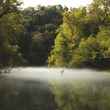
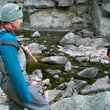

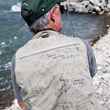



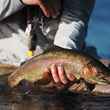





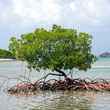



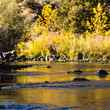




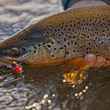
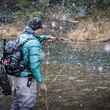
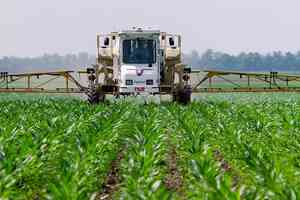
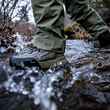

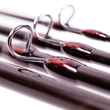
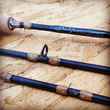
Comments